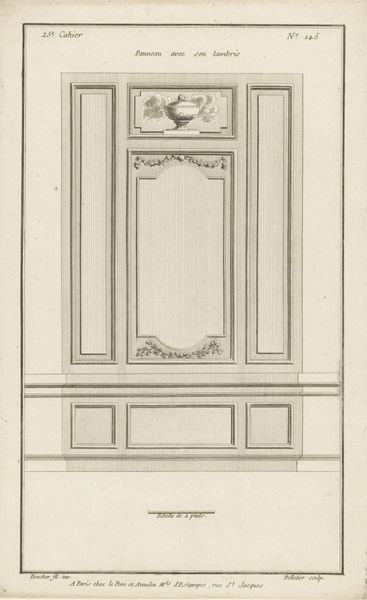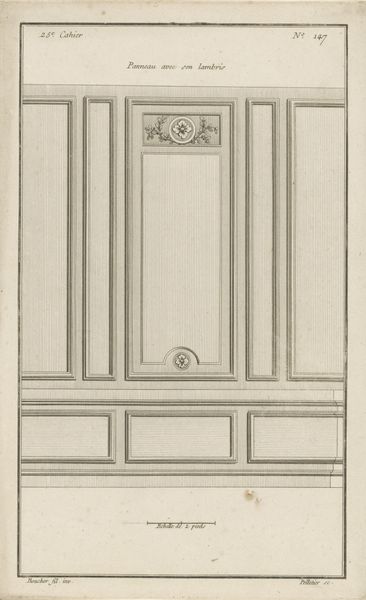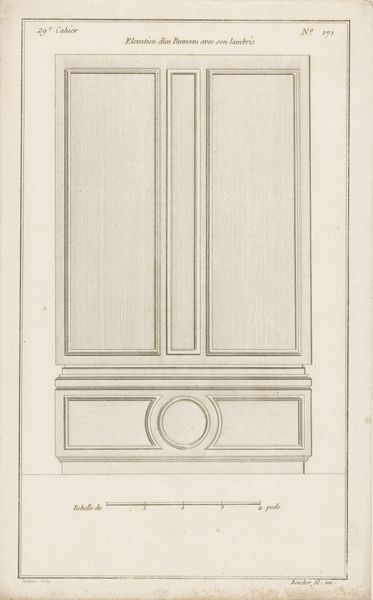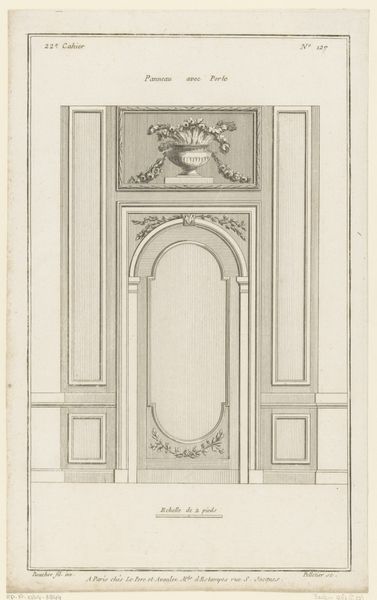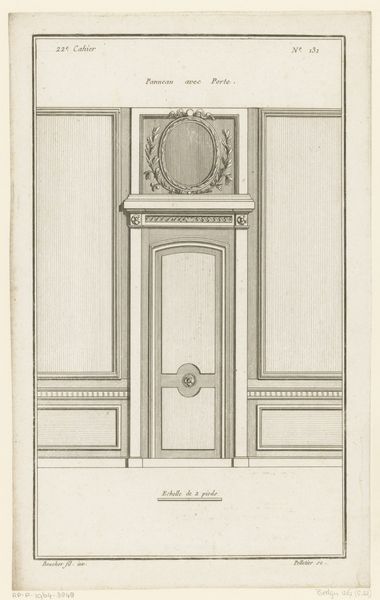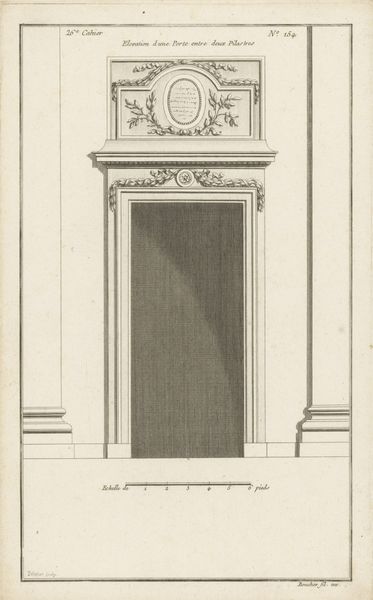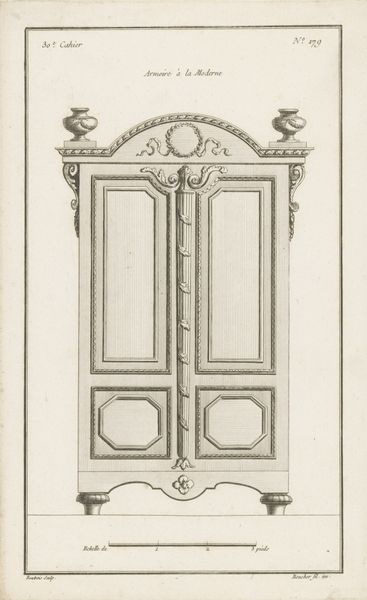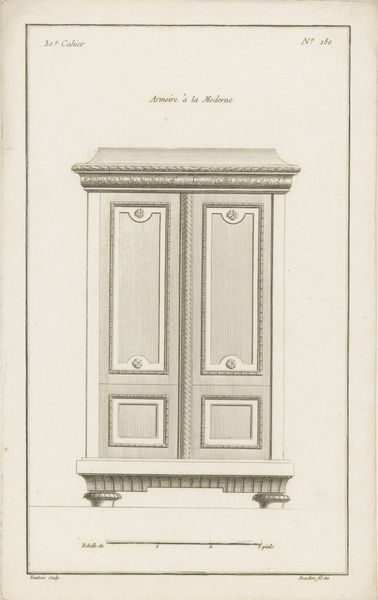
drawing, paper, ink
#
drawing
#
neoclacissism
#
paper
#
form
#
ink
#
geometric
#
line
#
decorative-art
Dimensions: height 328 mm, width 204 mm
Copyright: Rijks Museum: Open Domain
Editor: So, this is "Panelen met hoornen des overvloeds" – "Panels with Cornucopias," created sometime between 1772 and 1779 by Jean Pelletier. It's an ink drawing on paper. It strikes me as quite restrained and architectural in its composition. What can you tell me about it? Curator: It’s interesting that you say that. Restrained compared to what? This is neoclassicism. Consider the materials. Ink, paper. Accessible, reproducible. This wasn’t intended for some palace, but for dissemination. Pelletier isn’t just designing a decorative panel; he is participating in the industrialized production of taste. Editor: So, the value isn’t necessarily in the uniqueness of the artwork itself, but more in its ability to be reproduced and distributed? Curator: Precisely. Think about the social context. Neoclassicism was a reaction against the excesses of the Rococo. There’s a moral component. The rising merchant class found value in designs that appeared rational, functional, and even austere – a direct opposition to aristocracy. Editor: How does the “drawing” medium itself contribute to that, compared to, say, a painting? Curator: It's a key distinction. Drawings are more easily copied, printed, and distributed. The means of production were integral to its social function, reaching broader audiences, influencing taste at many income levels and essentially forming a sort of common ground through access and a shared design sense. It also made design principles less the exclusive domain of a select few. Editor: So it’s about the democratization of design, then? Curator: In a way, yes. The labor involved, the materials chosen, and how this artwork entered the world – these are all interconnected. Editor: I see this drawing in a new light. I was only looking at it formally, but it sounds like its value lies in the process of its creation and distribution. Curator: Exactly! It’s a product of its time, both aesthetically and materially. Examining the art within its web of social and economic connections gives us more complete perspectives.
Comments
No comments
Be the first to comment and join the conversation on the ultimate creative platform.
